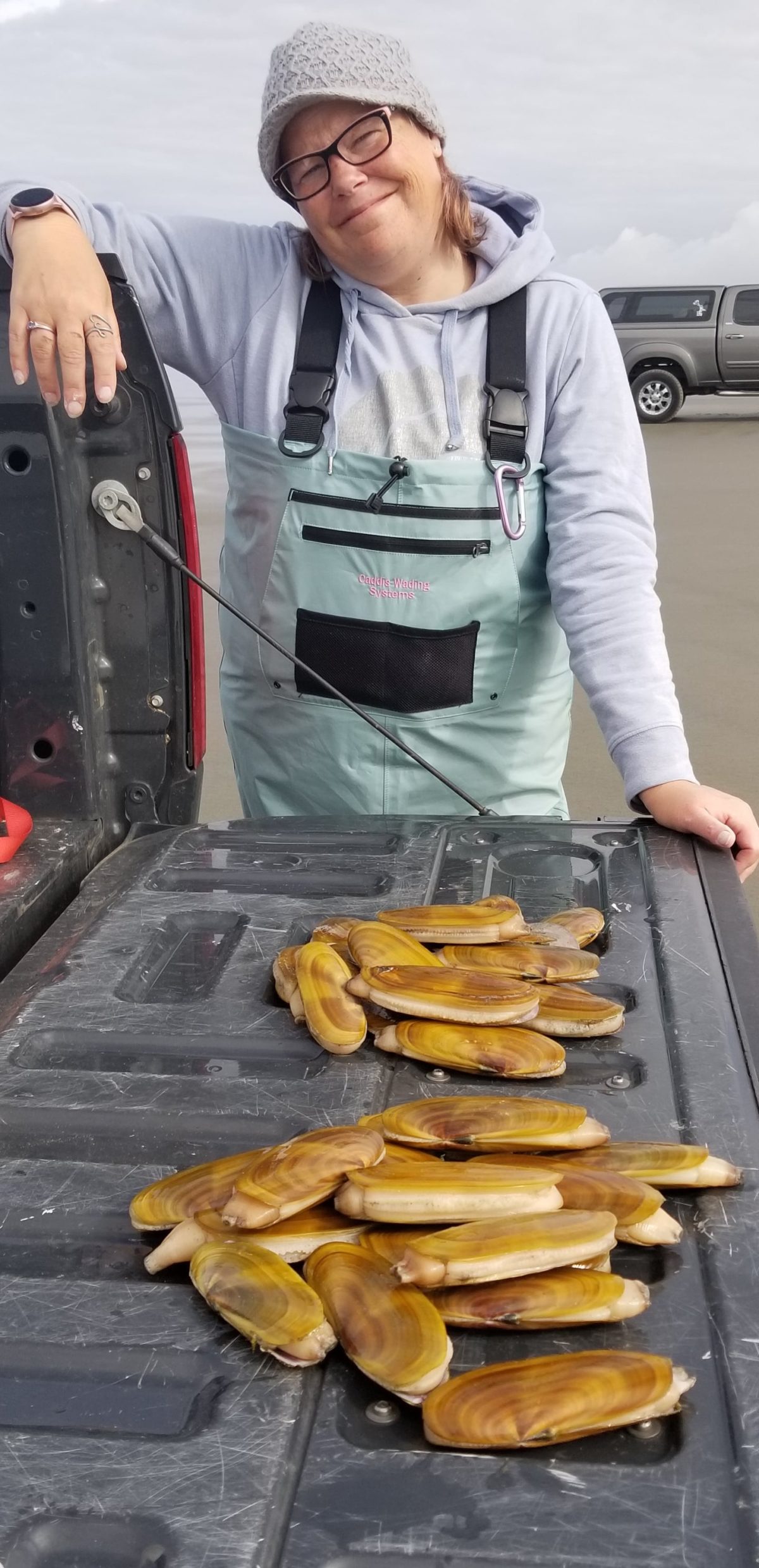
Clatsop Beaches Open For Razor Clams; ‘Above Average Or Better’ Digging
THE FOLLOWING IS A PRESS RELEASE FROM THE OREGON DEPARTMENT OF FISH AND WILDLIFE
Clatsop beach (Tillamook Head to Oregon/Washington border) reopened today for razor clam harvesting after biotoxin testing showed the second consecutive sample was below the safety threshold, the Oregon Department of Agriculture and ODFW announced today.

The area was closed to razor clamming since July 15 for the annual conservation closure that reopens Oct. 1 pending biotoxin test results. Rough seas earlier last week prevented biologists from obtaining samples until this weekend. Remember to always check ODA’s Recreational Shellfish page for any biotoxin closures before crabbing or clamming.
During the conservation closure, biologists assess the razor clam population on these beaches where most of Oregon’s razor clam harvest happens.
Shellfish biologist Matt Hunter found a large juvenile recruitment (new razor clams that establish themselves on the beaches) of 1.4 clams per square meter. The 20-year average is .75 clams with the highest in 2021 at 2.59 juvenile clams per square meter.
The majority of this year’s clams are juvenile and between three and four inches so clam digging should be above average or better this fall.
Once the juvenile clams begin to grow in the spring, digging in the spring of 2024 could be much more successful. Regardless, harvesters will need to focus on digging only the largest shows (larger than a nickel) to ensure a better chance of harvesting a larger clam.
Hunter believes the influx of juvenile recruitment is due to spring and early summer favorable winds pushing razor clam larvae on to Clatsop beach rather than north to Washington which is thought to have occurred in 2022.
Most years, Oregon sees razor clam spawning events in fall, in addition to the typical spring/summer spawning. Fall spawning can be an important component and in some years is the only juvenile recruitment.
Total razor clam (juvenile and mature) abundance is above the 1.32 average at 1.85 clams per square meter.
THE FOLLOWING IS A PRESS RELEASE FROM THE OREGON DEPARTMENT OF AGRICULTURE
The Oregon Department of Agriculture and the Oregon Department of Fish and Wildlife announce a new shellfish opening. Razor clamming is open from the south jetty of the Columbia River to Tillamook Head (south of Seaside). Recent samples show levels of the marine biotoxin domoic acid have dropped below the closure limit. Razor clamming remains open from Seal Rock to the California border.
Razor clamming remains closed from Tillamook Head to Seal Rock for elevated levels of the marine biotoxin domoic acid.
Mussel harvesting is closed from the Coquille River at Bandon to the California border. Mussel harvesting is open from the south jetty of the Columbia River to Coquille river. Crab, mussel and bay clam harvesting remain open along the entire Oregon coast. Oregon Department of Agriculture will continue to test for shellfish toxins twice per month, as tides and weather permit. Reopening an area closed for biotoxins requires two consecutive tests with results below the closure limit. Contact Oregon Department of Fish and Wildlife for recreational license requirements, permits, rules and limits.
For more information call Oregon Department of Agriculture’s (ODA) shellfish biotoxin safety hotline at (800) 448-2474, the Food Safety Division at (503) 986-4720, or visit the ODA recreational shellfish biotoxin closures webpage.
